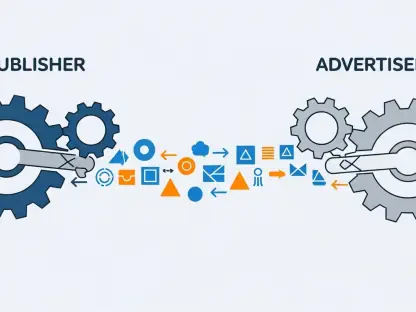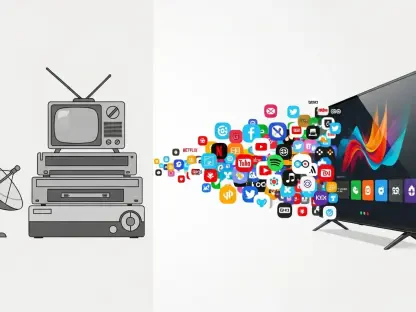Imagine a world where billions of devices seamlessly connect across continents, powering everything from smart farms to urban security systems, and this vision is closer than ever, thanks to strategic moves in the IoT connectivity space. One such pivotal development is Wireless Logic’s acquisition of Zipit Wireless, a US-based MVNO, along with its Canadian arm, Mtrex Networks. This roundup dives into diverse perspectives from industry insiders, analysts, and stakeholders to unpack how this deal amplifies IoT reach. The goal is to explore varying opinions on its impact, from market expansion to technological innovation, and to provide a comprehensive view of what this means for the future of connected ecosystems.
Unpacking the Strategic Move: Wireless Logic and Zipit Join Forces
This acquisition marks a significant milestone as Wireless Logic’s first US-headquartered purchase, signaling a bold step into the North American market. Industry observers note that this move aligns with a broader pattern of global expansion, building on previous deals in regions like Brazil, Israel, and Singapore. Many see this as a calculated effort to dominate IoT connectivity by blending international scale with regional expertise, positioning the company as a formidable player in a crowded field.
Analysts highlight the strategic timing of this deal, given the escalating demand for IoT solutions across industries. Some argue that entering the North American market through an established entity like Zipit offers immediate access to critical infrastructure and customer bases. However, others caution that cultural and regulatory differences could pose integration challenges, suggesting that success hinges on how well Wireless Logic adapts its global strategies to local nuances.
A recurring theme among stakeholders is the potential for this partnership to reshape the competitive landscape. While many agree on the transformative possibilities, opinions differ on the pace of impact. Some predict rapid market penetration, while others believe that building trust and aligning operations will take considerable time, pointing to a spectrum of expectations surrounding this union.
Breaking Down the Impact of Zipit’s Integration on IoT Connectivity
Enhancing North American Footprint with Strategic Carrier Ties
Zipit Wireless brings to the table robust partnerships with major carriers like AT&T, Verizon, and Rogers, a factor widely praised by industry watchers as a gateway for Wireless Logic into North America. These relationships are seen as a cornerstone for expanding connectivity, particularly in a region with high IoT adoption rates. Many experts view this as a critical advantage, enabling quicker deployment of services to a diverse clientele.
The support for advanced technologies such as NB-IoT, LTE-M, and 5G, combined with Wireless Logic’s existing network of over 18 million connected devices, garners significant attention. Some analysts are optimistic, suggesting that this technological synergy could accelerate the rollout of next-generation IoT applications. Others, however, express reservations about the readiness of certain markets to adopt these innovations, citing discrepancies in infrastructure as a potential barrier.
Integration challenges also surface in discussions, with differing views on how smoothly regional standards can be harmonized. While some believe that Wireless Logic’s global experience will ease this process, others warn of delays due to varying compliance requirements across borders. This divergence in opinion underscores the complexity of scaling operations in a fragmented regulatory environment.
Revolutionizing IoT Billing with Zipit’s Platform Expertise
Zipit’s white-labeled billing platform, which has driven over $45 million in subscription revenue for OEM customers, is a focal point of discussion. Industry voices commend its ability to streamline complex IoT commercial models, particularly in B2B2C frameworks. This tool is often cited as a standout feature that could redefine how subscription services are managed in the IoT space.
Practical applications of this platform, spanning sectors like agriculture and digital signage, are frequently highlighted as proof of its value. Some insiders point to case studies where multi-tiered billing systems have enabled tailored solutions for end-users, enhancing customer satisfaction. This real-world impact is seen as a strong selling point, differentiating Wireless Logic from competitors with less flexible offerings.
Yet, scalability remains a debated topic. While many are bullish on the platform’s potential to expand globally, a few analysts raise concerns about adapting it to diverse market needs and currencies. The competitive edge it provides is acknowledged, but opinions split on whether it can maintain its lead against rapidly evolving rival solutions, reflecting a cautious optimism.
Tapping into Niche Markets and Emerging IoT Demands
Through Mtrex Networks, Zipit offers specialized expertise in sectors like security, surveillance, and point-of-sale, which many industry commentators view as aligning with burgeoning IoT demands. This focus on niche markets is often praised as a strategic asset, especially in North America where specific industry needs drive connectivity growth. Such targeted knowledge is seen as a catalyst for innovation.
Regional dynamics also shape the discourse, with some predicting that these niche strengths will influence broader IoT trends over the coming years. Enthusiasts argue that tailored solutions in high-growth areas could set new standards for application development. However, skeptics question whether this narrow focus might limit appeal in more generalized markets, suggesting a need for broader adaptability.
The assumption that niche expertise guarantees long-term success is not universally accepted. Certain analysts point to potential gaps in addressing universal IoT challenges, arguing that over-specialization could hinder competitiveness in a fast-evolving landscape. This critical perspective adds depth to the conversation, balancing the excitement with pragmatic concerns.
Synergizing Global Scale with Localized Proficiency
Industry leaders often emphasize the mutual benefits of combining Wireless Logic’s vast global reach with Zipit’s deep understanding of North American markets. This synergy is viewed as a powerful formula for addressing complex customer needs, with many applauding the complementary nature of the partnership. The blend of scale and specificity is frequently cited as a model for future IoT collaborations.
Comparisons to Wireless Logic’s earlier international acquisitions reveal a consistent strategy of leveraging local insights to enhance global service delivery. Some observers speculate that this pattern could redefine how IoT providers operate, pushing toward more integrated, region-specific solutions. Others, however, wonder if repeated acquisitions risk diluting core competencies, highlighting a divergence in long-term outlooks.
The unique positioning of this deal to tackle intricate client demands without redundancy is another point of interest. Analysts note that the acquisition avoids overlapping with prior benefits by focusing on distinct regional and technological strengths. This tailored approach is often seen as a blueprint for balancing global ambitions with localized execution, though opinions vary on its scalability across different geographies.
Key Insights and Practical Takeaways from the Acquisition
Synthesizing the varied perspectives, several key benefits emerge from this acquisition, including a fortified North American presence, cutting-edge billing tools, and deep industry-specific knowledge. Commentators largely agree that these elements collectively enhance Wireless Logic’s standing in the IoT arena. The consensus leans toward viewing this as a strategic win, despite differing timelines for realizing full potential.
For IoT stakeholders, the advice often centers on forging partnerships with localized experts to navigate regional complexities effectively. Investing in adaptable billing systems also surfaces as a recurring recommendation, seen as essential for managing the intricacies of modern IoT ecosystems. These actionable insights are frequently framed as vital for maintaining a competitive edge in a dynamic market.
Businesses looking to capitalize on similar merger and acquisition trends are encouraged to seek complementary technologies that bolster their existing offerings. Many industry voices suggest conducting thorough market analyses to identify gaps that strategic acquisitions can fill. This forward-thinking approach is widely regarded as a pathway to innovation and sustained growth in the connectivity sector.
Looking Ahead: The Future of Wireless Logic in the IoT Arena
Reflecting on the discussions that unfolded, it becomes clear that Wireless Logic’s acquisition of Zipit Wireless has positioned the company as a leader in IoT connectivity through a blend of global scale and specialized capabilities. The deal has strengthened its foothold in North America while enriching its technological arsenal, setting a precedent for strategic growth in a consolidating market.
For those eager to stay ahead, the next steps involve closely monitoring how such acquisitions influence IoT service delivery models. Exploring partnerships or investments in complementary platforms has emerged as a practical move to adapt to evolving demands. Additionally, keeping an eye on emerging regional trends has been advised to anticipate shifts in connectivity needs, ensuring readiness for the next wave of innovation in this interconnected landscape.









